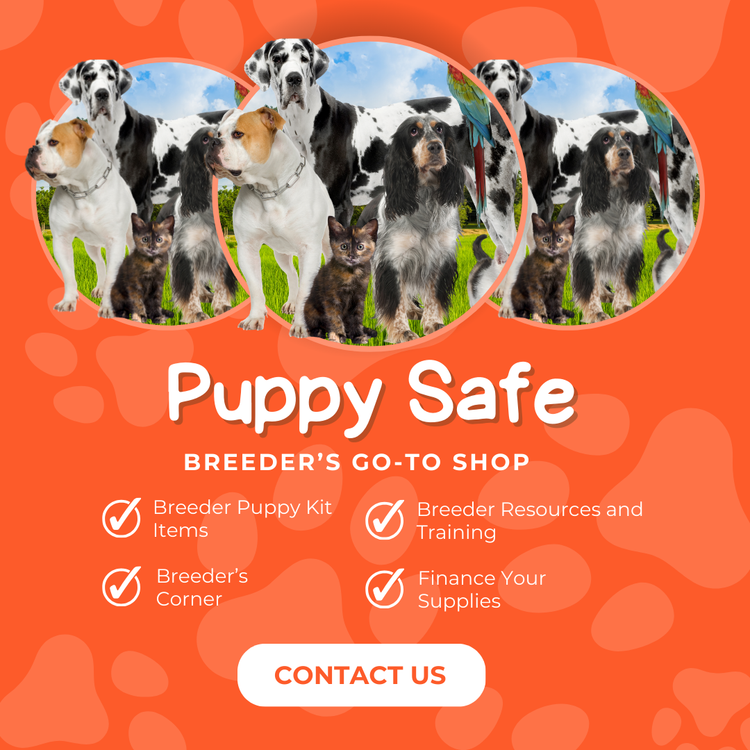
Comprehensive Guide to Tube Feeding Newborn Puppies
Tube feeding is an indispensable technique for caregivers of newborn puppies who are unable to nurse naturally. This method ensures that puppies receive the critical nutrients they need to thrive, especially when traditional nursing isn’t possible due to health complications or the mother’s unavailability.
Equipment and Setup for Tube Feeding
1. Feeding Tube Selection: Opt for a 5 to 7.5 FR size feeding tube, which is appropriate for most puppies. You can find these specialized tubes here.
2. Suction Device: It’s crucial to quickly clear any milk that might escape from the puppy’s nose. Use a specially designed suction device for puppies to prevent aspiration. Note: Never suction the mouth. The recommended suction device is available here.
Step-by-Step Tube Feeding Process
1. Prepare Your Space: Ensure you are in a well-lit area to handle the puppy safely and observe clearly.
2. Check Temperature: Verify the puppy’s rectal temperature is between 96°F and 99°F. If necessary, warm the puppy gently to reach the correct temperature range.
3. Measure and Mark: Accurately measure the feeding tube from the puppy’s nose to the last rib and mark it for correct placement.
4. Calculate the Correct Formula Amount:
• Weigh the Puppy: Record the weight in both ounces and grams. For the first feeding, administer half the puppy’s body weight in ml, e.g., 4ml for an 8-ounce puppy. Adjust based on the puppy’s response to the initial feeding.
• Monitor Weight Changes: If the puppy loses weight, gradually increase the formula amount to compensate.
5. Prepare the Formula: Warm the formula to body temperature using a warm water bath to avoid any hot spots.
6. Feeding Preparation: Apply a small amount of karo syrup, liver water, or Nutra-cal to the tube’s end. This helps the puppy to start swallowing. Gently insert the tube along the left side of the puppy’s tongue to the marked length.
7. Feed Slowly and Monitor: Administer the formula slowly. If the puppy begins to fight the tube vigorously, it’s a sign of stress or discomfort. In this case, gently place the puppy down to calm down and move on to the next puppy before trying again.
Important Considerations and Aftercare
• Monitoring and Adjustment: If the puppy becomes stressed during feeding, allow it some time to calm down before continuing. This approach helps prevent undue stress and potential injury.
• Overfeeding Concerns: Be vigilant as overfeeding can cause diarrhea and rapid weight gain, potentially leading to conditions like flat chest and swimmers syndrome.
• Plasma Support: If the puppy hasn’t latched within the first two days, consider obtaining plasma from the mother or a reliable source such as hemopet.org to boost the puppy’s immune system.
• After Feeding Care: It’s essential to clean the feeding tube and syringe thoroughly with hot, soapy water and allow them to air dry completely.
Health Support
Incorporate a probiotic into the puppy’s diet twice daily to support digestive health, which is particularly beneficial during hand-feeding. The recommended probiotic is available here.
Additional Tips
• Avoid Bottle Feeding: To reduce the risk of aspiration, avoid bottle feeding and stick to tube feeding as instructed.
• Consult Professionals: If unsure about any part of the feeding process, consult with a veterinarian or a professional experienced in neonatal puppy care.
Conclusion
Mastering the technique of tube feeding is essential for ensuring the health and survival of newborn puppies. This guide equips you with the knowledge and tools needed to provide the best possible care. Always proceed with patience and closely monitor the puppies’ responses during and after feeding to ensure their well-being. For any further questions or concerns, feel free to reach out to me directly.

